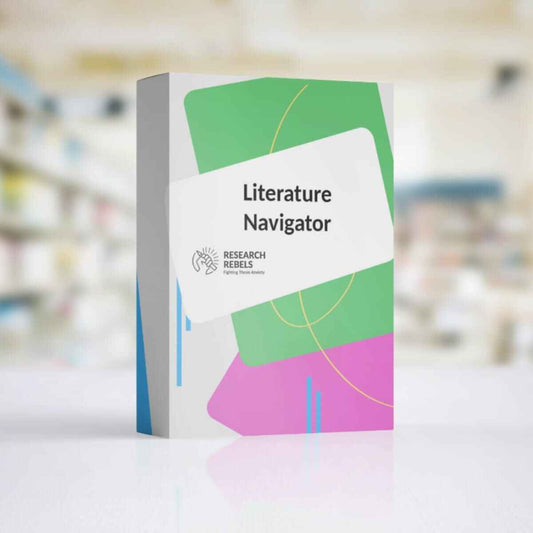Reproducibility in Research: How to Avoid Academic Pitfalls

Reproducibility in research is like the backbone of science. It's what makes sure that one scientist's findings can be trusted and built upon by others. But achieving it isn't always easy. Researchers face various hurdles, from flawed study designs to biases and limited access to data. These issues can lead to results that can't be replicated, causing setbacks in scientific progress. This article dives into the common pitfalls and offers practical tips to help researchers dodge these traps.
Key Takeaways
- Reproducibility ensures that research findings can be verified by others, forming a trustable scientific foundation.
- Common hurdles include poor study design, biases, and data access issues, which can hinder reproducibility.
- Open science practices and better training in study design can significantly improve research reproducibility.
- Technology plays a crucial role in aiding reproducibility through tools for data management and sharing.
- Ethical research practices, including transparency and honesty, are vital for maintaining reproducibility.
Understanding the Importance of Reproducibility in Research

Defining Reproducibility and Its Role in Science
Reproducibility is like the backbone of science. It's about being able to do an experiment again and get the same results. This isn't just about double-checking work; it's about making sure the science is solid. When researchers can repeat studies and get the same outcomes, it builds trust in the findings. Think of it like a recipe—if you can follow the steps and make the same dish every time, you know the recipe works.
Historical Context and Evolution of Reproducibility
Going back in time, reproducibility wasn't always a big deal. But as science grew, so did the need for reliable results. The scientific community started to realize that without reproducibility, findings were just guesses. Over the years, this concept has evolved, especially with the rise of digital tools like WhatsApp and LinkedIn, which allow for easier sharing and collaboration among scientists.
Impact of Reproducibility on Scientific Progress
Without reproducibility, science would be like building on quicksand. Solid, reproducible results are what push science forward. They allow other researchers to build on existing work confidently. When findings are reproducible, they become the foundation for new discoveries. This is why reproducibility is so crucial—it's what keeps science moving forward, ensuring that each new discovery is built on a strong, reliable base.
Common Challenges to Achieving Reproducibility
Poor Experimental Design and Methodology
One of the biggest hurdles in research reproducibility is poor experimental design. Studies that lack clear parameters or don't thoroughly review existing evidence often end up with results that others can't replicate. If the methodology is foggy or if there's a failure to minimize biases, reproducibility takes a hit. Think about it like posting a recipe on Instagram without listing all the ingredients—people trying to follow along are bound to get different results.
Cognitive Bias and Its Effects
Cognitive biases are another culprit that can mess with reproducibility. Researchers, like all humans, are prone to biases that can skew their interpretation of results. Whether it's confirmation bias, where one might only look for data that supports their hypothesis, or selection bias, where the sample isn't representative of the population, these biases can lead to misleading conclusions. Recognizing and addressing these biases is crucial for improving research outcomes.
The Role of Data Accessibility
Access to data is a major factor in reproducibility. If researchers can't get their hands on the original data, it's hard to verify and reproduce results. This is where data-sharing platforms and repositories come into play. They can help by making raw data and methodologies more accessible to researchers worldwide. Without them, it's like trying to complete a puzzle with missing pieces.
Here's a quick list of what can go wrong without proper data access:
- Incomplete datasets lead to skewed results.
- Lack of transparency makes it hard to verify findings.
- Misinterpretation of data due to missing context.
By acknowledging these challenges and working towards solutions, the scientific community can take a big step toward more reliable and trustworthy research. For more insights on biases and their impact on research analysis, check out our detailed discussion.
Strategies for Enhancing Reproducibility in Research
Implementing Open Science Practices
Open science is transforming how research is conducted and shared. It involves making scientific research, data, and dissemination accessible to all levels of an inquiring society. This approach includes open access to publications, open data, and open collaboration. By embracing open science, researchers can improve transparency and reproducibility. Sharing data and methodologies openly allows others to verify results and build upon them confidently.
Training in Statistical Methods and Study Design
Proper training in statistical methods and study design is essential for researchers. Many findings fail to be reproducible due to incorrect statistical analysis or poorly designed studies. Researchers should be equipped with the skills to choose the right statistical tools and design experiments that minimize bias and error. This training should be an integral part of academic programs, ensuring that researchers can produce reliable and reproducible results.
Promoting the Publication of Negative Results
Publishing negative results is often overlooked, yet it is crucial for scientific progress. Negative results provide valuable insights that can prevent other researchers from pursuing unfruitful directions. Encouraging the publication of all results, whether positive or negative, helps create a more complete scientific record. Journals and funding bodies should support this practice to enhance the reliability and reproducibility of research outcomes.
By incorporating these strategies, researchers can significantly improve the reproducibility of their work, fostering a more trustworthy and effective scientific community. For those wondering how to write your thesis in 30 days, these practices can also streamline your research process, ensuring clarity and consistency in your findings.
The Role of Technology in Facilitating Reproducibility
Data Management and Sharing Tools
In the realm of scientific research, data management is more than just organizing files. It's about ensuring that data is accessible, understandable, and usable by others. Advanced tools for data management and sharing play a pivotal role in this process. Effective research hinges on strong hypotheses and the importance of replication. Platforms like data repositories and cloud-based storage solutions allow researchers to share their datasets easily, facilitating independent verification of results. This open sharing of data not only promotes transparency but also encourages collaboration among researchers worldwide. Furthermore, these tools help in maintaining the integrity of data by providing secure environments for storage and access.
Software and Automation in Research
Software applications and automation technologies have transformed the landscape of scientific experimentation. From statistical analysis to complex simulations, software tools enable researchers to conduct experiments with precision and efficiency. Automation reduces human error, ensuring that experiments can be replicated accurately. For instance, lab automation systems can carry out repetitive tasks with consistent accuracy, which is crucial for reproducibility. Moreover, the use of software for data analysis, such as SPSS, R, and NVivo, can enhance efficiency and accuracy, while digital tools can streamline the research process. These technologies not only save time but also allow researchers to focus on more complex aspects of their work.
The Impact of Digital Repositories
Digital repositories serve as vital resources for storing and retrieving research outputs. They provide a platform for researchers to deposit their work, making it accessible to a broader audience. This accessibility is key to reproducibility, as it allows other scientists to review, critique, and build upon existing research. By housing a wide array of data, publications, and supplementary materials, digital repositories ensure that valuable research is not lost over time. They also support the publication of replication studies, which are essential for verifying the reliability of scientific findings. In essence, digital repositories act as the backbone of modern scientific communication, fostering an environment where research can be reliably replicated and validated.
Ethical Considerations in Reproducible Research
Transparency and Honesty in Reporting
In research, transparency is the backbone of trust. When scientists share their methods and results openly, it makes it easier for others to replicate and verify their work. This isn't just about sharing successes; it's about being honest when things don't go as planned. Reporting all findings, even the unexpected ones, helps build a clearer picture of the research landscape. Researchers should aim to provide detailed accounts of their methodologies, ensuring that every step is documented and accessible. This openness not only fosters trust but also encourages collaboration and innovation within the scientific community.
Addressing Conflicts of Interest
Conflicts of interest can cloud judgment, leading to biased results. Researchers must be upfront about any personal or financial interests that might influence their work. It's not just about avoiding conflicts but recognizing and addressing them when they arise. By doing so, researchers can maintain the integrity of their work and uphold the trust of their peers and the public. Utilizing tools like citation management systems can help keep track of sources and ensure proper credit is given where it's due.
The Responsibility of Peer Reviewers
Peer reviewers play a critical role in maintaining the quality and credibility of scientific literature. They are tasked with evaluating the accuracy and reproducibility of research before it is published. This process requires a keen eye for detail and a commitment to ethical standards. Reviewers must remain objective, providing constructive feedback that helps authors improve their work. By holding researchers accountable, peer reviewers contribute to a culture of integrity and excellence in academia. This collaborative effort between authors and reviewers is essential for advancing scientific knowledge and ensuring that published research is both reliable and trustworthy.
Future Directions for Reproducibility in Academia
Policy Changes and Institutional Support
The future of reproducibility in academia hinges on robust policy changes and institutional support. Universities and research institutions need to prioritize policies that encourage transparency and accountability. Implementing clear guidelines for data sharing and methodological transparency can go a long way in supporting reproducible research. Institutions should also incentivize researchers to publish negative results, which are often undervalued but crucial for a comprehensive scientific understanding.
Collaborative Efforts Across Disciplines
Collaboration across various disciplines is essential to enhance reproducibility. When researchers from different fields come together, they bring diverse perspectives and methodologies that can help identify and mitigate reproducibility issues. Such interdisciplinary collaborations can lead to innovative solutions and foster an environment where reproducibility is a shared goal. Establishing cross-disciplinary teams and networks can also facilitate the exchange of best practices and resources.
The Role of Funding Agencies in Promoting Reproducibility
Funding agencies play a pivotal role in shaping the research landscape. They have the power to promote reproducibility by requiring grantees to adhere to stringent reproducibility standards. Agencies can mandate the inclusion of detailed methodological descriptions and data availability in grant applications. Additionally, funding bodies can support initiatives that aim to improve reproducibility, such as training programs and workshops. By doing so, they not only enhance the quality of funded research but also contribute to a culture of transparency and rigor in academia.
In conclusion, the path forward for reproducibility in academia involves a concerted effort from institutions, researchers, and funding bodies. With the right policies and collaborations, the academic community can overcome current challenges and achieve more reliable and credible scientific outcomes.
As we look ahead, it's clear that improving reproducibility in academic research is essential. We invite you to explore our website, where you can find valuable resources and support to help you navigate your academic journey with confidence. Don't miss out on the chance to enhance your skills and succeed!
Conclusion
In the end, ensuring reproducibility in research isn't just a box to tick off—it's a cornerstone of credible science. By focusing on clear methodologies, honest reporting, and a willingness to share both successes and failures, researchers can build a more reliable foundation for future studies. It's about creating a culture where transparency and accuracy are valued over speed and novelty. This shift not only strengthens individual studies but also enhances the overall trust in scientific findings. As we move forward, embracing these principles will be key to avoiding the common pitfalls that have plagued academic research for too long.
Frequently Asked Questions
What does reproducibility mean in research?
Reproducibility in research means being able to repeat an experiment or study and get the same results. It's important because it shows that the findings are reliable and not just a one-time thing.
Why is reproducibility important in science?
Reproducibility is crucial because it helps confirm that scientific findings are accurate and trustworthy. If other researchers can repeat the experiment and get the same results, it means the study is likely correct.
What challenges do researchers face in achieving reproducibility?
Researchers often struggle with things like poor experimental design, lack of access to original data, and biases that can affect their results. These challenges can make it hard to reproduce studies accurately.
How can technology help with reproducibility in research?
Technology can help by providing tools for data management and sharing, making it easier for researchers to access the information they need to replicate studies. Digital repositories and software also play a big role in this.
What are some strategies to improve reproducibility in research?
Some strategies include using open science practices, training researchers in proper study design and statistics, and encouraging the publication of negative results to provide a complete picture of the research.
What ethical considerations are involved in reproducible research?
Ethical considerations include being honest and transparent in reporting results, avoiding conflicts of interest, and ensuring that peer reviewers take responsibility for checking the reproducibility of studies.
Reproducibility in Research: How to Avoid Academic Pitfalls

Reproducibility in research is like the backbone of science. It's what makes sure that one scientist's findings can be trusted and built upon by others. But achieving it isn't always easy. Researchers face various hurdles, from flawed study designs to biases and limited access to data. These issues can lead to results that can't be replicated, causing setbacks in scientific progress. This article dives into the common pitfalls and offers practical tips to help researchers dodge these traps.
Key Takeaways
- Reproducibility ensures that research findings can be verified by others, forming a trustable scientific foundation.
- Common hurdles include poor study design, biases, and data access issues, which can hinder reproducibility.
- Open science practices and better training in study design can significantly improve research reproducibility.
- Technology plays a crucial role in aiding reproducibility through tools for data management and sharing.
- Ethical research practices, including transparency and honesty, are vital for maintaining reproducibility.
Understanding the Importance of Reproducibility in Research

Defining Reproducibility and Its Role in Science
Reproducibility is like the backbone of science. It's about being able to do an experiment again and get the same results. This isn't just about double-checking work; it's about making sure the science is solid. When researchers can repeat studies and get the same outcomes, it builds trust in the findings. Think of it like a recipe—if you can follow the steps and make the same dish every time, you know the recipe works.
Historical Context and Evolution of Reproducibility
Going back in time, reproducibility wasn't always a big deal. But as science grew, so did the need for reliable results. The scientific community started to realize that without reproducibility, findings were just guesses. Over the years, this concept has evolved, especially with the rise of digital tools like WhatsApp and LinkedIn, which allow for easier sharing and collaboration among scientists.
Impact of Reproducibility on Scientific Progress
Without reproducibility, science would be like building on quicksand. Solid, reproducible results are what push science forward. They allow other researchers to build on existing work confidently. When findings are reproducible, they become the foundation for new discoveries. This is why reproducibility is so crucial—it's what keeps science moving forward, ensuring that each new discovery is built on a strong, reliable base.
Common Challenges to Achieving Reproducibility
Poor Experimental Design and Methodology
One of the biggest hurdles in research reproducibility is poor experimental design. Studies that lack clear parameters or don't thoroughly review existing evidence often end up with results that others can't replicate. If the methodology is foggy or if there's a failure to minimize biases, reproducibility takes a hit. Think about it like posting a recipe on Instagram without listing all the ingredients—people trying to follow along are bound to get different results.
Cognitive Bias and Its Effects
Cognitive biases are another culprit that can mess with reproducibility. Researchers, like all humans, are prone to biases that can skew their interpretation of results. Whether it's confirmation bias, where one might only look for data that supports their hypothesis, or selection bias, where the sample isn't representative of the population, these biases can lead to misleading conclusions. Recognizing and addressing these biases is crucial for improving research outcomes.
The Role of Data Accessibility
Access to data is a major factor in reproducibility. If researchers can't get their hands on the original data, it's hard to verify and reproduce results. This is where data-sharing platforms and repositories come into play. They can help by making raw data and methodologies more accessible to researchers worldwide. Without them, it's like trying to complete a puzzle with missing pieces.
Here's a quick list of what can go wrong without proper data access:
- Incomplete datasets lead to skewed results.
- Lack of transparency makes it hard to verify findings.
- Misinterpretation of data due to missing context.
By acknowledging these challenges and working towards solutions, the scientific community can take a big step toward more reliable and trustworthy research. For more insights on biases and their impact on research analysis, check out our detailed discussion.
Strategies for Enhancing Reproducibility in Research
Implementing Open Science Practices
Open science is transforming how research is conducted and shared. It involves making scientific research, data, and dissemination accessible to all levels of an inquiring society. This approach includes open access to publications, open data, and open collaboration. By embracing open science, researchers can improve transparency and reproducibility. Sharing data and methodologies openly allows others to verify results and build upon them confidently.
Training in Statistical Methods and Study Design
Proper training in statistical methods and study design is essential for researchers. Many findings fail to be reproducible due to incorrect statistical analysis or poorly designed studies. Researchers should be equipped with the skills to choose the right statistical tools and design experiments that minimize bias and error. This training should be an integral part of academic programs, ensuring that researchers can produce reliable and reproducible results.
Promoting the Publication of Negative Results
Publishing negative results is often overlooked, yet it is crucial for scientific progress. Negative results provide valuable insights that can prevent other researchers from pursuing unfruitful directions. Encouraging the publication of all results, whether positive or negative, helps create a more complete scientific record. Journals and funding bodies should support this practice to enhance the reliability and reproducibility of research outcomes.
By incorporating these strategies, researchers can significantly improve the reproducibility of their work, fostering a more trustworthy and effective scientific community. For those wondering how to write your thesis in 30 days, these practices can also streamline your research process, ensuring clarity and consistency in your findings.
The Role of Technology in Facilitating Reproducibility
Data Management and Sharing Tools
In the realm of scientific research, data management is more than just organizing files. It's about ensuring that data is accessible, understandable, and usable by others. Advanced tools for data management and sharing play a pivotal role in this process. Effective research hinges on strong hypotheses and the importance of replication. Platforms like data repositories and cloud-based storage solutions allow researchers to share their datasets easily, facilitating independent verification of results. This open sharing of data not only promotes transparency but also encourages collaboration among researchers worldwide. Furthermore, these tools help in maintaining the integrity of data by providing secure environments for storage and access.
Software and Automation in Research
Software applications and automation technologies have transformed the landscape of scientific experimentation. From statistical analysis to complex simulations, software tools enable researchers to conduct experiments with precision and efficiency. Automation reduces human error, ensuring that experiments can be replicated accurately. For instance, lab automation systems can carry out repetitive tasks with consistent accuracy, which is crucial for reproducibility. Moreover, the use of software for data analysis, such as SPSS, R, and NVivo, can enhance efficiency and accuracy, while digital tools can streamline the research process. These technologies not only save time but also allow researchers to focus on more complex aspects of their work.
The Impact of Digital Repositories
Digital repositories serve as vital resources for storing and retrieving research outputs. They provide a platform for researchers to deposit their work, making it accessible to a broader audience. This accessibility is key to reproducibility, as it allows other scientists to review, critique, and build upon existing research. By housing a wide array of data, publications, and supplementary materials, digital repositories ensure that valuable research is not lost over time. They also support the publication of replication studies, which are essential for verifying the reliability of scientific findings. In essence, digital repositories act as the backbone of modern scientific communication, fostering an environment where research can be reliably replicated and validated.
Ethical Considerations in Reproducible Research
Transparency and Honesty in Reporting
In research, transparency is the backbone of trust. When scientists share their methods and results openly, it makes it easier for others to replicate and verify their work. This isn't just about sharing successes; it's about being honest when things don't go as planned. Reporting all findings, even the unexpected ones, helps build a clearer picture of the research landscape. Researchers should aim to provide detailed accounts of their methodologies, ensuring that every step is documented and accessible. This openness not only fosters trust but also encourages collaboration and innovation within the scientific community.
Addressing Conflicts of Interest
Conflicts of interest can cloud judgment, leading to biased results. Researchers must be upfront about any personal or financial interests that might influence their work. It's not just about avoiding conflicts but recognizing and addressing them when they arise. By doing so, researchers can maintain the integrity of their work and uphold the trust of their peers and the public. Utilizing tools like citation management systems can help keep track of sources and ensure proper credit is given where it's due.
The Responsibility of Peer Reviewers
Peer reviewers play a critical role in maintaining the quality and credibility of scientific literature. They are tasked with evaluating the accuracy and reproducibility of research before it is published. This process requires a keen eye for detail and a commitment to ethical standards. Reviewers must remain objective, providing constructive feedback that helps authors improve their work. By holding researchers accountable, peer reviewers contribute to a culture of integrity and excellence in academia. This collaborative effort between authors and reviewers is essential for advancing scientific knowledge and ensuring that published research is both reliable and trustworthy.
Future Directions for Reproducibility in Academia
Policy Changes and Institutional Support
The future of reproducibility in academia hinges on robust policy changes and institutional support. Universities and research institutions need to prioritize policies that encourage transparency and accountability. Implementing clear guidelines for data sharing and methodological transparency can go a long way in supporting reproducible research. Institutions should also incentivize researchers to publish negative results, which are often undervalued but crucial for a comprehensive scientific understanding.
Collaborative Efforts Across Disciplines
Collaboration across various disciplines is essential to enhance reproducibility. When researchers from different fields come together, they bring diverse perspectives and methodologies that can help identify and mitigate reproducibility issues. Such interdisciplinary collaborations can lead to innovative solutions and foster an environment where reproducibility is a shared goal. Establishing cross-disciplinary teams and networks can also facilitate the exchange of best practices and resources.
The Role of Funding Agencies in Promoting Reproducibility
Funding agencies play a pivotal role in shaping the research landscape. They have the power to promote reproducibility by requiring grantees to adhere to stringent reproducibility standards. Agencies can mandate the inclusion of detailed methodological descriptions and data availability in grant applications. Additionally, funding bodies can support initiatives that aim to improve reproducibility, such as training programs and workshops. By doing so, they not only enhance the quality of funded research but also contribute to a culture of transparency and rigor in academia.
In conclusion, the path forward for reproducibility in academia involves a concerted effort from institutions, researchers, and funding bodies. With the right policies and collaborations, the academic community can overcome current challenges and achieve more reliable and credible scientific outcomes.
As we look ahead, it's clear that improving reproducibility in academic research is essential. We invite you to explore our website, where you can find valuable resources and support to help you navigate your academic journey with confidence. Don't miss out on the chance to enhance your skills and succeed!
Conclusion
In the end, ensuring reproducibility in research isn't just a box to tick off—it's a cornerstone of credible science. By focusing on clear methodologies, honest reporting, and a willingness to share both successes and failures, researchers can build a more reliable foundation for future studies. It's about creating a culture where transparency and accuracy are valued over speed and novelty. This shift not only strengthens individual studies but also enhances the overall trust in scientific findings. As we move forward, embracing these principles will be key to avoiding the common pitfalls that have plagued academic research for too long.
Frequently Asked Questions
What does reproducibility mean in research?
Reproducibility in research means being able to repeat an experiment or study and get the same results. It's important because it shows that the findings are reliable and not just a one-time thing.
Why is reproducibility important in science?
Reproducibility is crucial because it helps confirm that scientific findings are accurate and trustworthy. If other researchers can repeat the experiment and get the same results, it means the study is likely correct.
What challenges do researchers face in achieving reproducibility?
Researchers often struggle with things like poor experimental design, lack of access to original data, and biases that can affect their results. These challenges can make it hard to reproduce studies accurately.
How can technology help with reproducibility in research?
Technology can help by providing tools for data management and sharing, making it easier for researchers to access the information they need to replicate studies. Digital repositories and software also play a big role in this.
What are some strategies to improve reproducibility in research?
Some strategies include using open science practices, training researchers in proper study design and statistics, and encouraging the publication of negative results to provide a complete picture of the research.
What ethical considerations are involved in reproducible research?
Ethical considerations include being honest and transparent in reporting results, avoiding conflicts of interest, and ensuring that peer reviewers take responsibility for checking the reproducibility of studies.
Reproducibility in Research: How to Avoid Academic Pitfalls

Reproducibility in research is like the backbone of science. It's what makes sure that one scientist's findings can be trusted and built upon by others. But achieving it isn't always easy. Researchers face various hurdles, from flawed study designs to biases and limited access to data. These issues can lead to results that can't be replicated, causing setbacks in scientific progress. This article dives into the common pitfalls and offers practical tips to help researchers dodge these traps.
Key Takeaways
- Reproducibility ensures that research findings can be verified by others, forming a trustable scientific foundation.
- Common hurdles include poor study design, biases, and data access issues, which can hinder reproducibility.
- Open science practices and better training in study design can significantly improve research reproducibility.
- Technology plays a crucial role in aiding reproducibility through tools for data management and sharing.
- Ethical research practices, including transparency and honesty, are vital for maintaining reproducibility.
Understanding the Importance of Reproducibility in Research

Defining Reproducibility and Its Role in Science
Reproducibility is like the backbone of science. It's about being able to do an experiment again and get the same results. This isn't just about double-checking work; it's about making sure the science is solid. When researchers can repeat studies and get the same outcomes, it builds trust in the findings. Think of it like a recipe—if you can follow the steps and make the same dish every time, you know the recipe works.
Historical Context and Evolution of Reproducibility
Going back in time, reproducibility wasn't always a big deal. But as science grew, so did the need for reliable results. The scientific community started to realize that without reproducibility, findings were just guesses. Over the years, this concept has evolved, especially with the rise of digital tools like WhatsApp and LinkedIn, which allow for easier sharing and collaboration among scientists.
Impact of Reproducibility on Scientific Progress
Without reproducibility, science would be like building on quicksand. Solid, reproducible results are what push science forward. They allow other researchers to build on existing work confidently. When findings are reproducible, they become the foundation for new discoveries. This is why reproducibility is so crucial—it's what keeps science moving forward, ensuring that each new discovery is built on a strong, reliable base.
Common Challenges to Achieving Reproducibility
Poor Experimental Design and Methodology
One of the biggest hurdles in research reproducibility is poor experimental design. Studies that lack clear parameters or don't thoroughly review existing evidence often end up with results that others can't replicate. If the methodology is foggy or if there's a failure to minimize biases, reproducibility takes a hit. Think about it like posting a recipe on Instagram without listing all the ingredients—people trying to follow along are bound to get different results.
Cognitive Bias and Its Effects
Cognitive biases are another culprit that can mess with reproducibility. Researchers, like all humans, are prone to biases that can skew their interpretation of results. Whether it's confirmation bias, where one might only look for data that supports their hypothesis, or selection bias, where the sample isn't representative of the population, these biases can lead to misleading conclusions. Recognizing and addressing these biases is crucial for improving research outcomes.
The Role of Data Accessibility
Access to data is a major factor in reproducibility. If researchers can't get their hands on the original data, it's hard to verify and reproduce results. This is where data-sharing platforms and repositories come into play. They can help by making raw data and methodologies more accessible to researchers worldwide. Without them, it's like trying to complete a puzzle with missing pieces.
Here's a quick list of what can go wrong without proper data access:
- Incomplete datasets lead to skewed results.
- Lack of transparency makes it hard to verify findings.
- Misinterpretation of data due to missing context.
By acknowledging these challenges and working towards solutions, the scientific community can take a big step toward more reliable and trustworthy research. For more insights on biases and their impact on research analysis, check out our detailed discussion.
Strategies for Enhancing Reproducibility in Research
Implementing Open Science Practices
Open science is transforming how research is conducted and shared. It involves making scientific research, data, and dissemination accessible to all levels of an inquiring society. This approach includes open access to publications, open data, and open collaboration. By embracing open science, researchers can improve transparency and reproducibility. Sharing data and methodologies openly allows others to verify results and build upon them confidently.
Training in Statistical Methods and Study Design
Proper training in statistical methods and study design is essential for researchers. Many findings fail to be reproducible due to incorrect statistical analysis or poorly designed studies. Researchers should be equipped with the skills to choose the right statistical tools and design experiments that minimize bias and error. This training should be an integral part of academic programs, ensuring that researchers can produce reliable and reproducible results.
Promoting the Publication of Negative Results
Publishing negative results is often overlooked, yet it is crucial for scientific progress. Negative results provide valuable insights that can prevent other researchers from pursuing unfruitful directions. Encouraging the publication of all results, whether positive or negative, helps create a more complete scientific record. Journals and funding bodies should support this practice to enhance the reliability and reproducibility of research outcomes.
By incorporating these strategies, researchers can significantly improve the reproducibility of their work, fostering a more trustworthy and effective scientific community. For those wondering how to write your thesis in 30 days, these practices can also streamline your research process, ensuring clarity and consistency in your findings.
The Role of Technology in Facilitating Reproducibility
Data Management and Sharing Tools
In the realm of scientific research, data management is more than just organizing files. It's about ensuring that data is accessible, understandable, and usable by others. Advanced tools for data management and sharing play a pivotal role in this process. Effective research hinges on strong hypotheses and the importance of replication. Platforms like data repositories and cloud-based storage solutions allow researchers to share their datasets easily, facilitating independent verification of results. This open sharing of data not only promotes transparency but also encourages collaboration among researchers worldwide. Furthermore, these tools help in maintaining the integrity of data by providing secure environments for storage and access.
Software and Automation in Research
Software applications and automation technologies have transformed the landscape of scientific experimentation. From statistical analysis to complex simulations, software tools enable researchers to conduct experiments with precision and efficiency. Automation reduces human error, ensuring that experiments can be replicated accurately. For instance, lab automation systems can carry out repetitive tasks with consistent accuracy, which is crucial for reproducibility. Moreover, the use of software for data analysis, such as SPSS, R, and NVivo, can enhance efficiency and accuracy, while digital tools can streamline the research process. These technologies not only save time but also allow researchers to focus on more complex aspects of their work.
The Impact of Digital Repositories
Digital repositories serve as vital resources for storing and retrieving research outputs. They provide a platform for researchers to deposit their work, making it accessible to a broader audience. This accessibility is key to reproducibility, as it allows other scientists to review, critique, and build upon existing research. By housing a wide array of data, publications, and supplementary materials, digital repositories ensure that valuable research is not lost over time. They also support the publication of replication studies, which are essential for verifying the reliability of scientific findings. In essence, digital repositories act as the backbone of modern scientific communication, fostering an environment where research can be reliably replicated and validated.
Ethical Considerations in Reproducible Research
Transparency and Honesty in Reporting
In research, transparency is the backbone of trust. When scientists share their methods and results openly, it makes it easier for others to replicate and verify their work. This isn't just about sharing successes; it's about being honest when things don't go as planned. Reporting all findings, even the unexpected ones, helps build a clearer picture of the research landscape. Researchers should aim to provide detailed accounts of their methodologies, ensuring that every step is documented and accessible. This openness not only fosters trust but also encourages collaboration and innovation within the scientific community.
Addressing Conflicts of Interest
Conflicts of interest can cloud judgment, leading to biased results. Researchers must be upfront about any personal or financial interests that might influence their work. It's not just about avoiding conflicts but recognizing and addressing them when they arise. By doing so, researchers can maintain the integrity of their work and uphold the trust of their peers and the public. Utilizing tools like citation management systems can help keep track of sources and ensure proper credit is given where it's due.
The Responsibility of Peer Reviewers
Peer reviewers play a critical role in maintaining the quality and credibility of scientific literature. They are tasked with evaluating the accuracy and reproducibility of research before it is published. This process requires a keen eye for detail and a commitment to ethical standards. Reviewers must remain objective, providing constructive feedback that helps authors improve their work. By holding researchers accountable, peer reviewers contribute to a culture of integrity and excellence in academia. This collaborative effort between authors and reviewers is essential for advancing scientific knowledge and ensuring that published research is both reliable and trustworthy.
Future Directions for Reproducibility in Academia
Policy Changes and Institutional Support
The future of reproducibility in academia hinges on robust policy changes and institutional support. Universities and research institutions need to prioritize policies that encourage transparency and accountability. Implementing clear guidelines for data sharing and methodological transparency can go a long way in supporting reproducible research. Institutions should also incentivize researchers to publish negative results, which are often undervalued but crucial for a comprehensive scientific understanding.
Collaborative Efforts Across Disciplines
Collaboration across various disciplines is essential to enhance reproducibility. When researchers from different fields come together, they bring diverse perspectives and methodologies that can help identify and mitigate reproducibility issues. Such interdisciplinary collaborations can lead to innovative solutions and foster an environment where reproducibility is a shared goal. Establishing cross-disciplinary teams and networks can also facilitate the exchange of best practices and resources.
The Role of Funding Agencies in Promoting Reproducibility
Funding agencies play a pivotal role in shaping the research landscape. They have the power to promote reproducibility by requiring grantees to adhere to stringent reproducibility standards. Agencies can mandate the inclusion of detailed methodological descriptions and data availability in grant applications. Additionally, funding bodies can support initiatives that aim to improve reproducibility, such as training programs and workshops. By doing so, they not only enhance the quality of funded research but also contribute to a culture of transparency and rigor in academia.
In conclusion, the path forward for reproducibility in academia involves a concerted effort from institutions, researchers, and funding bodies. With the right policies and collaborations, the academic community can overcome current challenges and achieve more reliable and credible scientific outcomes.
As we look ahead, it's clear that improving reproducibility in academic research is essential. We invite you to explore our website, where you can find valuable resources and support to help you navigate your academic journey with confidence. Don't miss out on the chance to enhance your skills and succeed!
Conclusion
In the end, ensuring reproducibility in research isn't just a box to tick off—it's a cornerstone of credible science. By focusing on clear methodologies, honest reporting, and a willingness to share both successes and failures, researchers can build a more reliable foundation for future studies. It's about creating a culture where transparency and accuracy are valued over speed and novelty. This shift not only strengthens individual studies but also enhances the overall trust in scientific findings. As we move forward, embracing these principles will be key to avoiding the common pitfalls that have plagued academic research for too long.
Frequently Asked Questions
What does reproducibility mean in research?
Reproducibility in research means being able to repeat an experiment or study and get the same results. It's important because it shows that the findings are reliable and not just a one-time thing.
Why is reproducibility important in science?
Reproducibility is crucial because it helps confirm that scientific findings are accurate and trustworthy. If other researchers can repeat the experiment and get the same results, it means the study is likely correct.
What challenges do researchers face in achieving reproducibility?
Researchers often struggle with things like poor experimental design, lack of access to original data, and biases that can affect their results. These challenges can make it hard to reproduce studies accurately.
How can technology help with reproducibility in research?
Technology can help by providing tools for data management and sharing, making it easier for researchers to access the information they need to replicate studies. Digital repositories and software also play a big role in this.
What are some strategies to improve reproducibility in research?
Some strategies include using open science practices, training researchers in proper study design and statistics, and encouraging the publication of negative results to provide a complete picture of the research.
What ethical considerations are involved in reproducible research?
Ethical considerations include being honest and transparent in reporting results, avoiding conflicts of interest, and ensuring that peer reviewers take responsibility for checking the reproducibility of studies.














